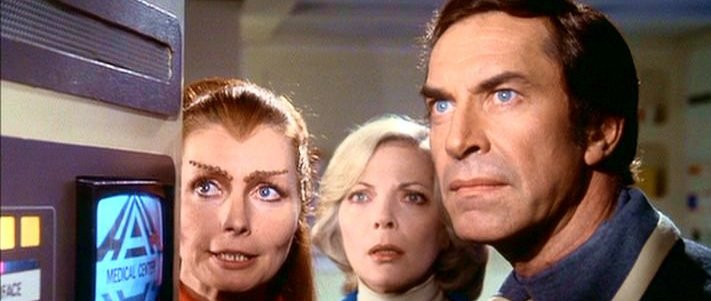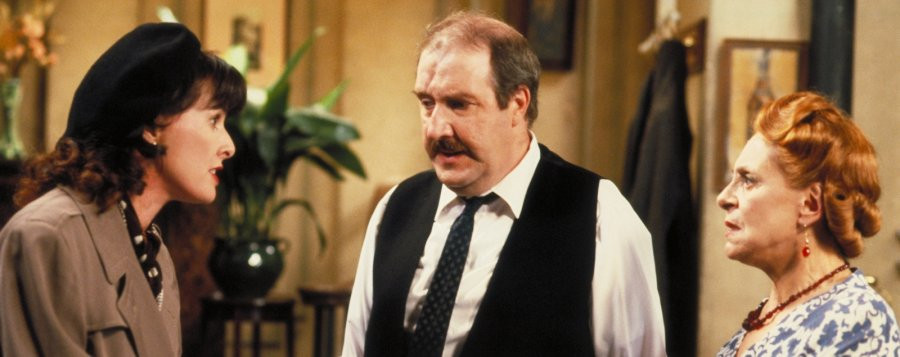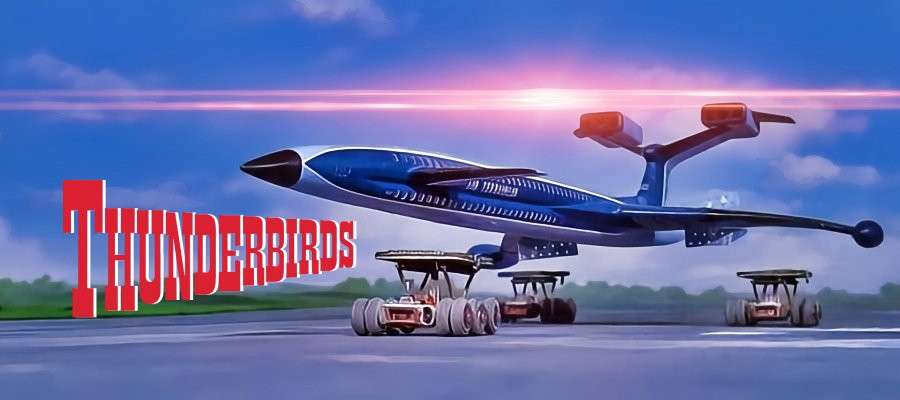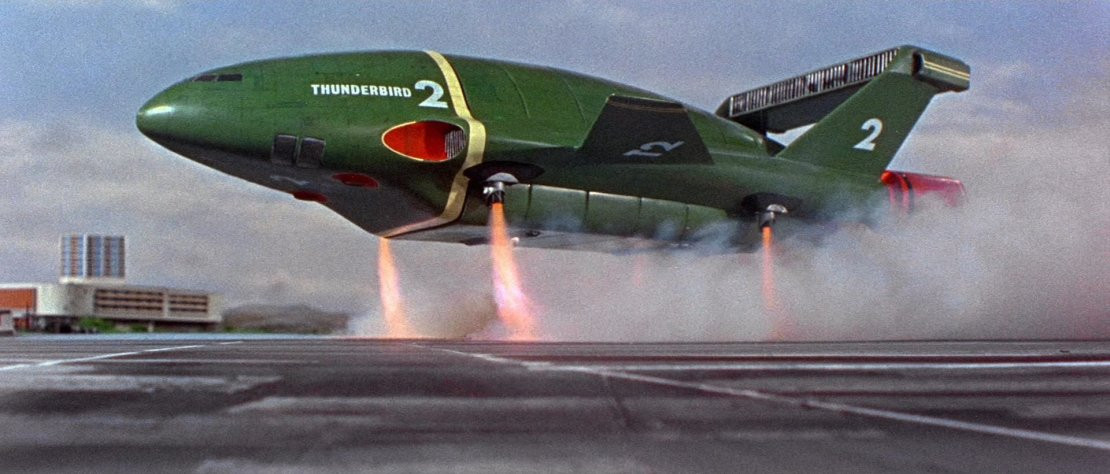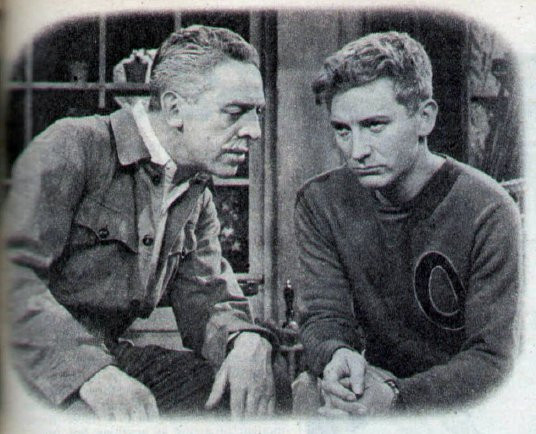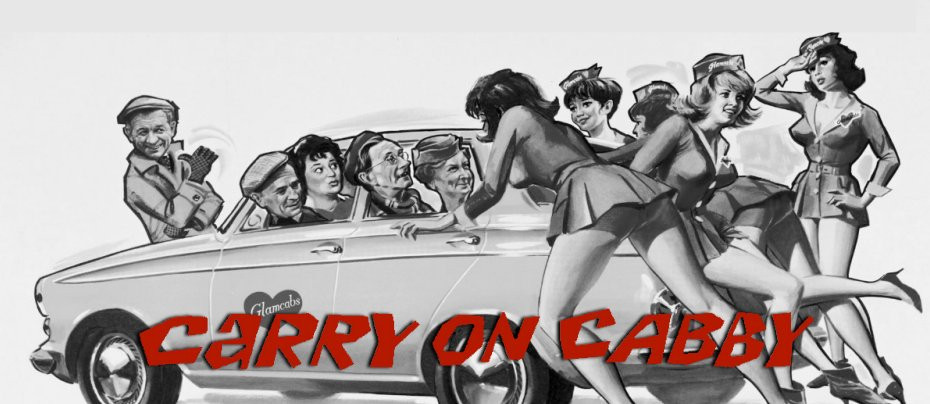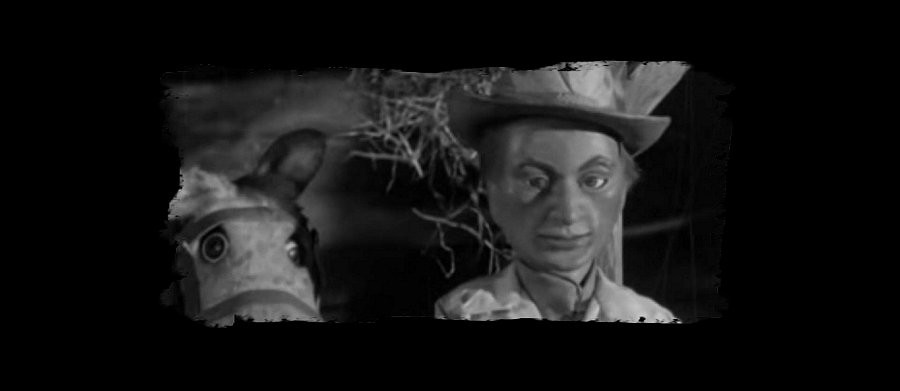
Four Feather Falls
1960 - United KingdomFollowing the earlier productions The Adventures of Twizzle and Torchy the Battery Boy, AP Films embarked on what was then their most ambitious project to date: Four Feather Falls. With more intricate and detailed sets than anything attempted in their previous series, and more advanced puppet design, the show represented a clear step forward for Gerry Anderson and his team. The puppet heads were now made of fibreglass, a material both lighter and more robust than those previously used.
At the same time, Anderson and his crew were experimenting with electronic techniques to synchronise the puppets' mouth movements with pre-recorded dialogue. A solenoid was installed in each puppet's head, linked to an incredibly fine tungsten wire—just 1/5,000th of an inch thick—through which electrical pulses were transmitted, following a recording of the actors’ voices. This innovation marked one of the earliest stages in the development of the technique Anderson would later famously term Supermarionation.
The pilot episode was completed by April 1959. Set in Kansas during the closing years of the 19th century, the story takes place in the frontier town of Four Feather Falls, near Silver City—a Western setting infused with elements of fantasy. As the pilot opens, our hero, Tex Tucker, is crossing the desert with his faithful dog, Dusty, and his loyal horse, Rocky. Along the way, they encounter a young, lost Native American boy named Makooya—the son of the powerful chief Kallamakooya.
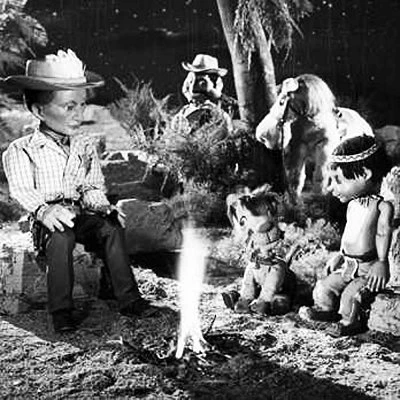
After rescuing the boy, Tex and his companions reach a dry watering hole. Kallamakooya appears in a cloud of smoke and, using mystical powers, restores the flow of water. In gratitude for saving his son’s life, the chief presents Tex with four magical feathers: two give Rocky and Dusty the ability to speak (though only Tex can understand them), and the other two animate Tex’s revolvers, enabling them to swivel and fire on their own when danger arises.
Tex arrives in Four Feather Falls to take up the role of sheriff, using his unusual gifts to protect the townsfolk from an assortment of threats—including a pair of bungling Mexican bandits named Pedro and Fernando. Tex quickly becomes a well-loved figure among the town’s honest citizens: Grandpa Twink and his grandson Little Jake, saloon proprietor Slim Jim, telegraph operator Dan Morse, bank manager Marvin Jackson, shopkeeper Ma Jones, and the kindly Doc Haggerty—all of whom are often found enjoying one of Tex’s songs.
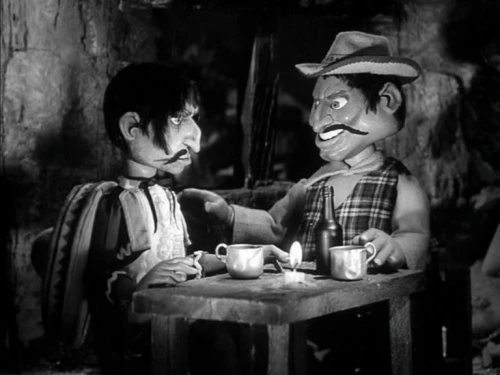
Tex Tucker was voiced by Nicholas Parsons, best known at the time as Arthur Haynes’ straight man on his popular comedy series. Kenneth Connor lent his voice to Rocky, Dusty, Marvin Jackson, Doc Haggerty, Slim Jim, Chief Kallamakooya, and the villainous Pedro. Parsons also voiced Dan Morse. Denise Bryer brought to life the characters of Little Jake, Ma Jones, and Makooya. Later in the series, another actor joined the cast—David Graham, a longtime friend of Anderson from his Elstree Studios days. Graham provided the voices for Grandpa Twink, Fernando, Big Ben, and Indian Chief Red Scalp, and would remain an integral part of Anderson’s productions for years to come.

In keeping with Anderson’s tradition of including musical elements in his work, the series featured a selection of songs. These were performed by Michael Holliday, a well-known recording artist whose voice bore a striking resemblance to Bing Crosby’s. Holliday had scored several chart hits, most notably the UK number one The Story of My Life, written by Burt Bacharach and Hal David. He recorded six songs for the series: Four Feather Falls, The Phantom Rider, The Rick-Rick-A-Rackety Train, Happy Hearts and Friendly Faces, My Home Town, and Two Gun Tex of Texas—the latter serving as the show’s closing theme. Contrary to popular belief, Four Feather Falls was not the series’ theme tune and was only heard in select episodes, sung by Tex himself.
The show’s harmonica music was provided by Tommy Reilly, a distinguished classical performer who had recorded extensively with Parlophone during the 1950s, often working alongside a young producer named George Martin—later of Beatles fame.
The pilot was presented to Granada Television, who commissioned a full series of 34 episodes.

The original idea for Four Feather Falls came from the series’ composer Barry Gray, who also wrote the pilot script. Anderson later admitted that he did not credit Gray as the creator simply because he didn’t realise such a title existed at the time. “It’s difficult to imagine,” Anderson reflected years later, “but we were desperately naïve in those days.” Gray’s concept was originally called Two Gun Tex Tucker, and was set in the fictional wild west town of Spelltown, Kansas. Tex was envisioned as a crack shot lawman with the ability to hit two flying coins with a single draw. He was assisted by an overweight companion named Buster, and other characters included Slim Jim and Jake Jollymop. These early ideas were refined into Two Gun Tex of Texas, with Jake being replaced by Timothy Twinkle—known as Grandpa Twink—and the setting renamed Four Feather Falls. Other abandoned characters included Martha Lollipop, storekeeper Red Feather of the Kiowa tribe, the town doctor Angus McDougall (nicknamed Jock the Doc), and the storyteller character, as well as names like Merry Myrtle, Mary Lou, Big Chief Four Feather, and Saucy Sal.
Four Feather Falls premiered in the UK on Thursday 25 February 1960 at 5:00pm, just two days after Torchy the Battery Boy had debuted in the London region. The show was featured on the cover of that week’s TV Times.
Despite its success and the high hopes of AP Films, a second series never materialised. When the final episode was delivered, Anderson recalled receiving a cheque—but little in the way of thanks or feedback. It was a bitter disappointment, particularly as he and his team had already devised a concept for their next show.
That show was called… Supercar.
Seen this show? How do you rate it?
Seen this show? How do you rate it?
Published on May 11th, 2020. Written by Marc Saul for Television Heaven.


